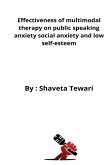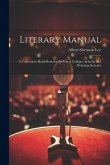This research study is in the area of speaking assessment (SA) of learners at the tertiary level. SA is literally nonexistent at the tertiary level, although English language teaching is compulsorily done where English literature is not the major area of study. However, assessment of language skills (as opposed to testing content from the prescribed text books) is rarely done and more importantly SA is conspicuous by its absence. At the secondary level, however, more recently, the Central Board of Secondary Education (CBSE) that has about 17000 schools within its jurisdiction has introduced assessment of speaking and listening (ASL) in the last three to four years. The impact of this initiative is yet to be witnessed at the tertiary level. In response to learner needs and demands, the University of Delhi (DU), where the study is located, offers a non-credit course called the English Language Proficiency Course (ELPC), with a view to improve learners' English language proficiency. Learners take a proficiency test at the end of an 80-hour course (now reduced to a 40 hour course) that assesses all the four language skills, i.e. reading, writing, listening and speaking. This test has communicative tasks roughly aligned with the CEFR (Common European Framework for Reference) can-do statements and has been in use for the last 8 years. The test has gone through minor modifications in iterative cycles to make it as valid and reliable as possible. The speaking test that forms a part of the proficiency test is the subject of this study as well as a point of departure. It tries to examine the 'what' and 'how' of the test, i.e. the objectives and tasks that are used and more importantly the scale that is used to assess the speaking proficiency of learners. Given that India is a multilingual (ML) country with learners using two or sometimes three languages in a facile, fluid and meaningful way with varying levels of competence in their everyday life, the scale used to assess their performance would have to use ML norms to do justice to this aspect of language use. Although the existing scale is not expressly multilingual but has some bearings on it, it will need to accommodate ML norms in a more informed and systematic manner. It is argued here that the issue of multilingualism especially in the context of SA
Hinweis: Dieser Artikel kann nur an eine deutsche Lieferadresse ausgeliefert werden.
Hinweis: Dieser Artikel kann nur an eine deutsche Lieferadresse ausgeliefert werden.







